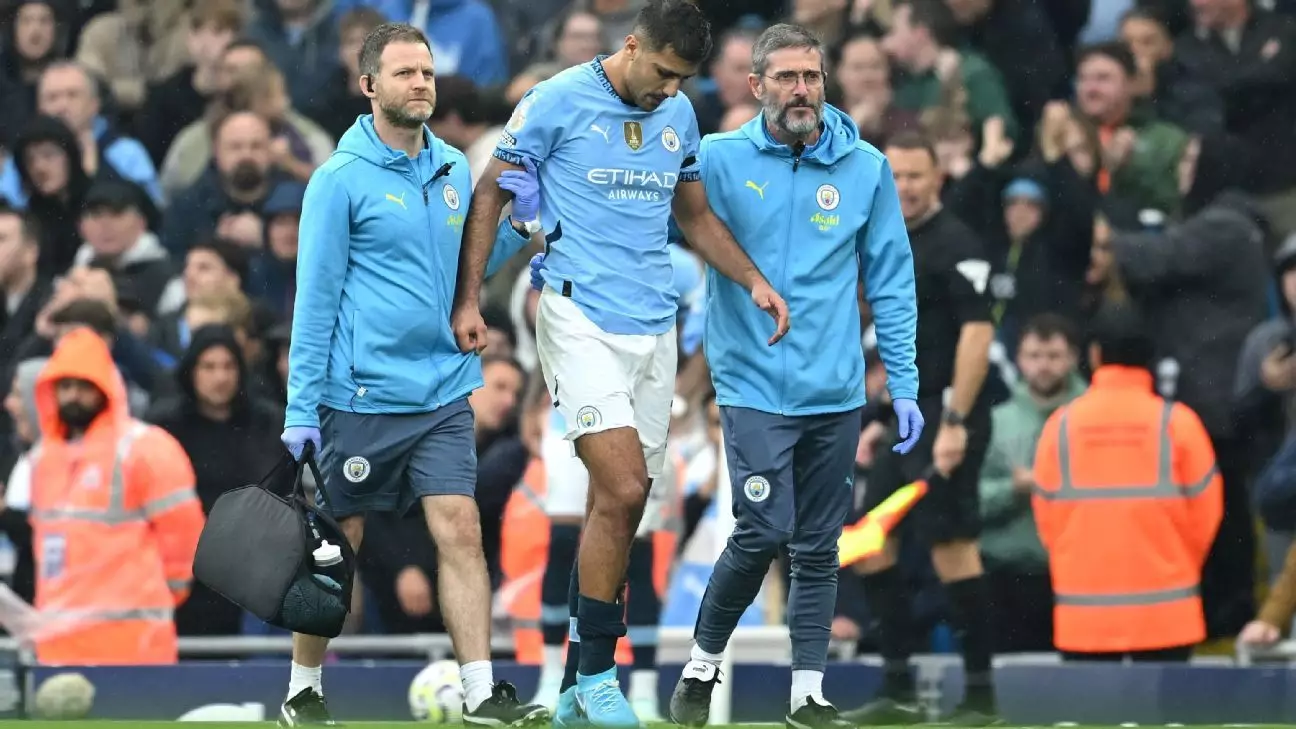Football has become more than just a game; it is a multifaceted industry characterized by numerous stakeholders, each with their own agendas. The debate surrounding fixture congestion in football is not as straightforward as “players vs. owners.” Instead, it presents a labyrinth of competing interests—including players, clubs, leagues, and governing bodies—who are all motivated by self-preservation and profit. The dynamics of this situation reveal a complex ecosystem that plays out in the halls of power and reinforces the old adage that in football, as in life, nothing is simple.
At the core of the fixture congestion debate are the elite football players. Those in top clubs like Manchester City have the privilege of high salaries but also bear the weight of exhausting schedules. While players like Rodri, Kevin De Bruyne, and Erling Haaland voice concerns over too many matches, there are also teammates like Matheus Nunes and Jack Grealish who see fewer minutes on the pitch and would welcome the chance for more game time. This internal division reflects a broader issue: each player’s priorities can vastly differ based on their career stage and ambitions.
Clubs are equally split. Major teams depend on income from matchday sales, broadcasting rights, and sponsorships, all of which are driven by the sheer volume of games played. Naturally, they resist any significant changes to the fixture list that could undermine their financial viability. On the other hand, less prominent clubs often find themselves sidelined, eager for any opportunity to showcase their talents, match by match. This game of conflicting interests means players at all tiers find themselves entangled in a calendar that seems relentless.
Player unions should ideally act as advocates for athlete welfare, yet they walk a fine line between multiple interests. In the absence of a traditional collective bargaining agreement—a structure present in many American sports—the unions’ role becomes even more complicated. They attempt to highlight the issues of “overload” (for elite players) and “underload” (for those who hardly see the field), advocating for a balance that prioritizes player health while acknowledging the commercial motives of clubs.
What becomes evident is that the unions focus on external factors contributing to fixture congestion—primarily UEFA and FIFA’s expanding tournament formats—rather than the domestic leagues themselves. This strategy cleverly distances the leagues, such as the Premier League, from the negative optics of being the “bad guy.” By shifting the blame to governing bodies while simultaneously recognizing their need to provide lucrative platforms for elite players, the unions try to navigate this minefield with caution.
Money lies at the root of the fixture crisis. The “grow at all costs” mentality among football clubs has led to a continuous expansion of their offerings, inadvertently contributing to fixture overload. The financial pressures become particularly acute when player salaries dominate club budgets, an issue exacerbated by clubs’ strategies to enhance their revenue by scheduling additional games.
To address this, Real Madrid’s manager Carlo Ancelotti recently suggested that players could consider accepting pay cuts in exchange for a reduced number of fixtures. While this notion may seem radical, it highlights a possible starting point for negotiations. If elite players can align their financial interests with their physical well-being, perhaps the potential exists for a paradigm shift that prioritizes player health without sacrificing club income.
Identifying a solution to the dilemma of fixture congestion is not straightforward. Possibilities range from designing a more equitable distribution of playing time to instituting mandatory rest periods akin to those seen in other industries. For instance, just as flight crews or truck drivers require regulated breaks for safety, a similar principle may be beneficial for professional athletes.
Innovative measures—such as negotiating a percentage of fixtures played in relation to salary—may offer a resolution that aligns interests across the board. Imagine a scenario in which a player like Haaland negotiates for a reduced salary in exchange for a lighter schedule. This approach could maintain club revenues while allowing players to focus on both their physical health and performance.
The dialogue surrounding fixture congestion in football should not dismiss the roles of various stakeholders engaged in this intricate ecosystem. It is imperative that the key players—the top-tier athletes who experience the brunt of fixture overload—recognize their collective power and the unique position they occupy. Reaching an agreement that considers all perspectives will require an understanding that, though the stakes are high, mutual benefit can be gained through compromise.
As the various factions continue to negotiate, it’s essential to foster an environment that promotes both player welfare and system sustainability. By unpacking these complex relationships and prioritizing communication, football can aim to strike a balance that honors the sport’s history while paving the way for a healthier future, both on and off the pitch.

